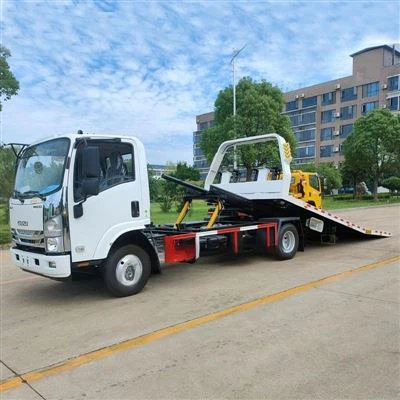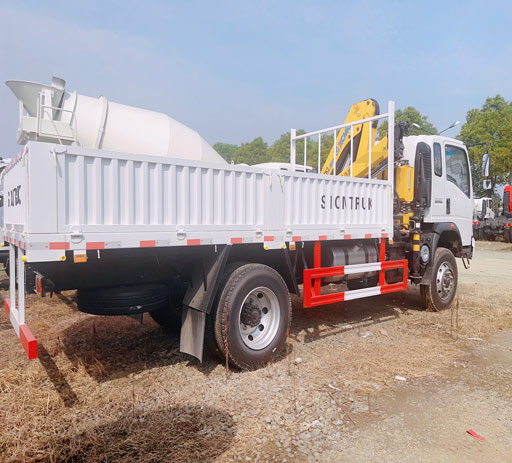What is a Water Tanker? Understanding Its Importance and Usage

Water tankers play a crucial role in ensuring that communities and industries have access to clean and safe water for various purposes. In this article, we will explore everything there is to know about water tankers, their types, uses, maintenance, and more. Whether you are considering hiring a water tanker service or are simply curious about how they operate, this comprehensive guide will provide you with all the information you need.
Table of Contents
- What is a Water Tanker?
- Types of Water Tankers
- Uses of Water Tankers
- How to Choose the Right Water Tanker
- Maintenance of Water Tankers
- Regulations Surrounding Water Tankers
- Cost of Hiring a Water Tanker
- Practical Examples and Tips
- Frequently Asked Questions
What is a Water Tanker?
A water tanker is a specialized vehicle designed to transport large quantities of water from one location to another. These tankers can vary in size and capacity, ranging from small trucks carrying a few hundred gallons to large tankers equipped to hold several thousand gallons. Water tankers are equipped with a storage tank, pumping system, and hose to facilitate the efficient delivery of water.
The Importance of Water Tankers
Water tankers are essential in areas where access to clean water supply is limited or disrupted. They can provide water for drinking, irrigation, firefighting, construction, and other commercial purposes. Their role in disaster relief during droughts, floods, and other emergencies cannot be overstated.
Types of Water Tankers
Water tankers come in various types, each suited for specific applications. Understanding the different types can help you choose the right one for your needs.
1. Portable Water Tankers
Portable water tankers are typically smaller and designed for transporting potable water. They are commonly used for residential water supply, especially in rural areas.
2. Non-Potable Water Tankers
These tankers carry water that is not intended for human consumption, such as water for irrigation or construction. They are usually marked to prevent contamination.
3. Fire Water Tankers
These specialized tankers are equipped with high-capacity pumps and hoses to supply water for firefighting operations. They are critical during emergencies where a water source is not immediately available.
4. Construction Water Tankers
Used on construction sites, these tankers deliver water required for dust control, mixing concrete, and other construction-related activities.
5. Tanker Trucks
These larger and more robust vehicles are often used in industrial applications, carrying large volumes of water over long distances.
Uses of Water Tankers
Water tankers serve multiple purposes across different sectors. Here are some common uses:
1. Domestic Water Supply
In regions lacking reliable municipal water infrastructure, water tankers can supply households with drinking water and other daily needs.
2. Agriculture
Agricultural operations often rely on water tankers for irrigation, especially in arid regions where rainfall is sparse.
3. Industrial Use
Industries may require large amounts of water for processing, cooling, or cleaning, making water tankers essential in their operations.
4. Emergency Services
Water tankers provide immediate access to water during natural disasters, aiding firefighting and supporting affected communities.
How to Choose the Right Water Tanker
Choosing the right water tanker is vital for ensuring you meet your needs effectively. Here are some tips:
1. Determine Your Water Needs
Assess how much water you require and the purpose it serves (potable, irrigation, construction, etc.). This will guide your choice.
2. Evaluate Your Location
Consider the distance from the water source to the delivery location. A closer distance may allow you to select a smaller tanker.
3. Check for Compliance
Ensure the tanker complies with local regulations regarding water quality, especially for potable water.
4. Compare Prices and Services
Get quotes from various companies and compare their services, including delivery times, availability, and associated costs.
Tip: Seek Recommendations
Word-of-mouth recommendations can be beneficial when selecting a water tanker service, as they provide insights into reliability and quality.
Maintenance of Water Tankers
Regular maintenance is essential to ensure that water tankers function efficiently and safely. Here are key maintenance tips:
1. Regular Cleaning

Tankers should be cleaned regularly to prevent contamination. This includes rinsing the tanks and inspecting for residues.
2. Check for Leaks
Leaking or damaged tanks can lead to significant water loss and impact the efficacy of deliveries. Inspect the tank for damages regularly.
3. Inspect Pumping Equipment
Ensure that the pumping and hose systems are in good working order. Malfunctions can delay water delivery and create safety hazards.
4. Monitor for Compliance
Stay informed about local regulations regarding water transport to ensure that your tanker remains compliant.
Regulations Surrounding Water Tankers
Water tankers must adhere to various regulations and standards to ensure safe and efficient operation. These regulations may include:
1. Licensing Requirements
Drivers of water tankers may need special licensing to operate these vehicles, particularly in commercial applications.
2. Water Quality Standards
Regulations dictate the quality of water that can be transported, especially for potable purposes. Compliance is critical to public health.
3. Environmental Considerations
Loading and unloading procedures may be regulated to prevent spillage, contamination, or damage to the environment.
Cost of Hiring a Water Tanker
The cost of hiring a water tanker can vary based on several factors:
1. Type of Water
The cost may differ depending on whether the water is potable or non-potable.
2. Distance
Longer transport distances typically incur higher costs due to fuel consumption and time.
3. Quantity of Water
Most providers price their services based on the volume of water required.
Sample Pricing Table
| Water Type | Price per 1000 gallons | Delivery Fee |
|---|---|---|
| Potable Water | $150 | $50 |
| Non-Potable Water | $100 | $40 |
| Fire Water | $200 | $60 |
Practical Examples and Tips
Here are some practical examples and tips for effectively using water tankers:
Example 1: Domestic Use
A family living in a rural area without municipal water supply can regularly hire a potable water tanker to meet their daily needs. They should ensure that the tank is cleaned periodically to maintain water quality.
Example 2: Construction Projects
Construction companies frequently use water tankers for dust control. For large projects, hiring a tanker on a contract basis provides a steady water supply at a fixed rate.
Tip 1: Plan Ahead

When organizing a water delivery, plan ahead to avoid delays in construction or other activities dependent on water access.
Tip 2: Establish a Regular Schedule
For businesses that require regular water deliveries, establish a schedule with suppliers to ensure consistent availability.

Frequently Asked Questions
1. How much water can a water tanker hold?
The capacity of a water tanker can range from a few hundred gallons to over 10,000 gallons, depending on the vehicle type and purpose.
2. Is it safe to drink water from a tanker?
Water from a tanker is safe to drink only if it is designated as potable water and meets health regulations. Always verify with the supplier.
3. How long does it take for a water tanker to deliver water?
Delivery times can vary based on distance, road conditions, and tanker availability, but typically range from 30 minutes to several hours.
4. Can water tankers be used in emergencies?
Yes, water tankers are often utilized in emergencies for firefighting, disaster relief, and to supply communities affected by water outages.
5. What should I do if my water tanker leaks?
If you notice a leak, stop using the tanker immediately and contact a professional for inspection and repair.
6. Are there specific regulations for transporting water?
Yes, laws governing the transportation of water vary by jurisdiction and often include quality standards and licensing requirements for drivers.
